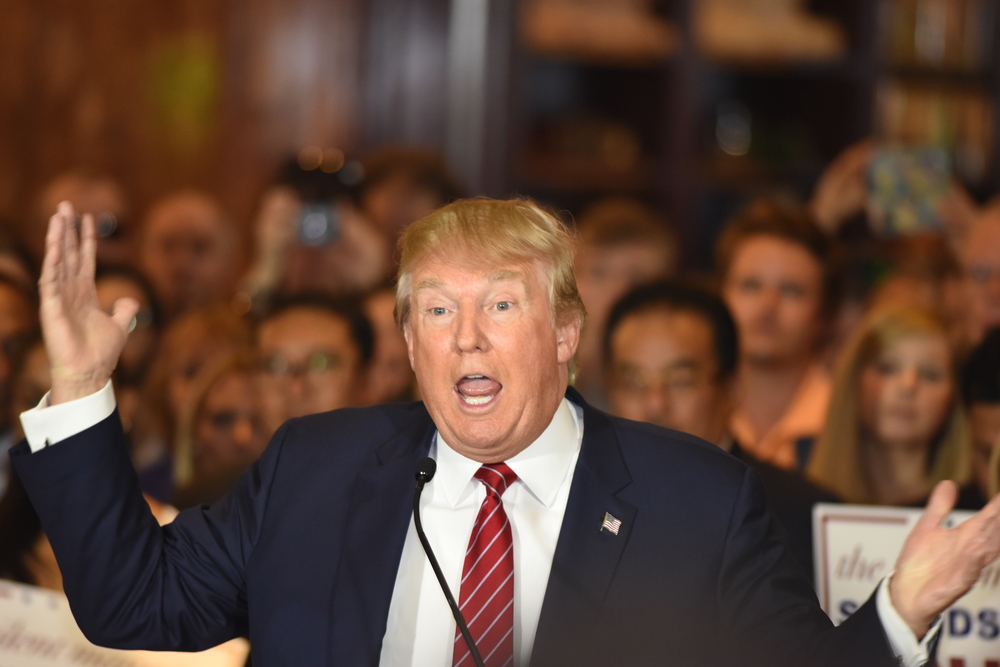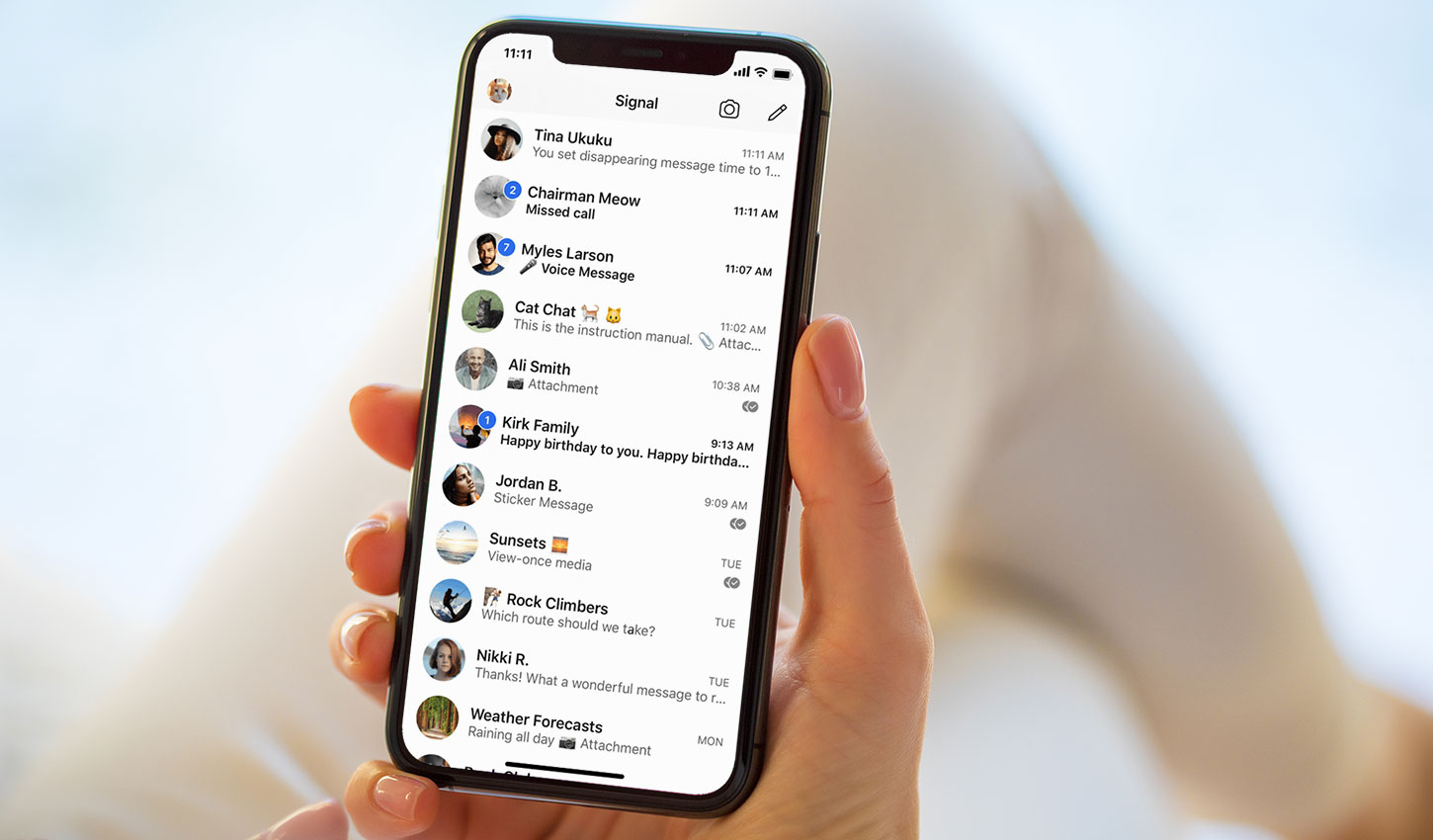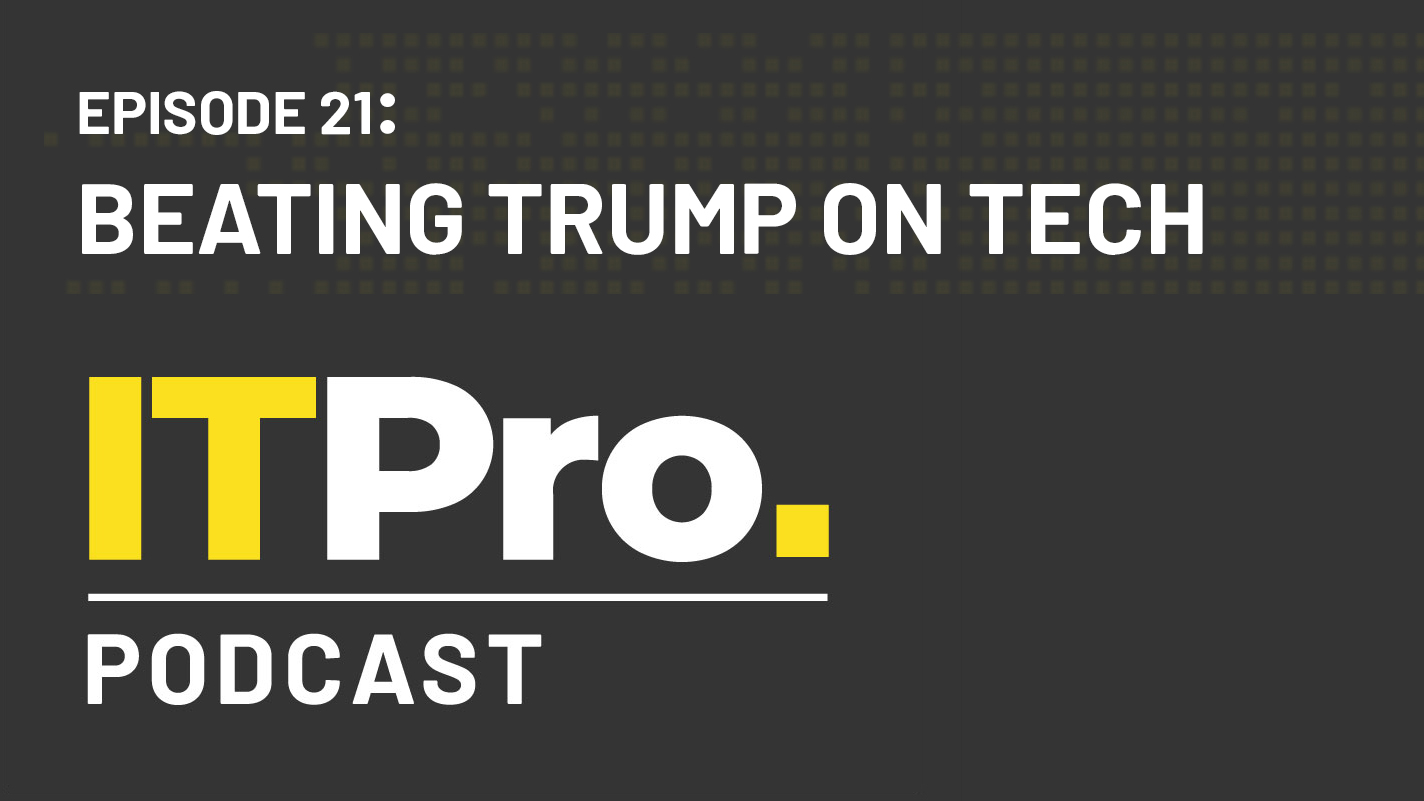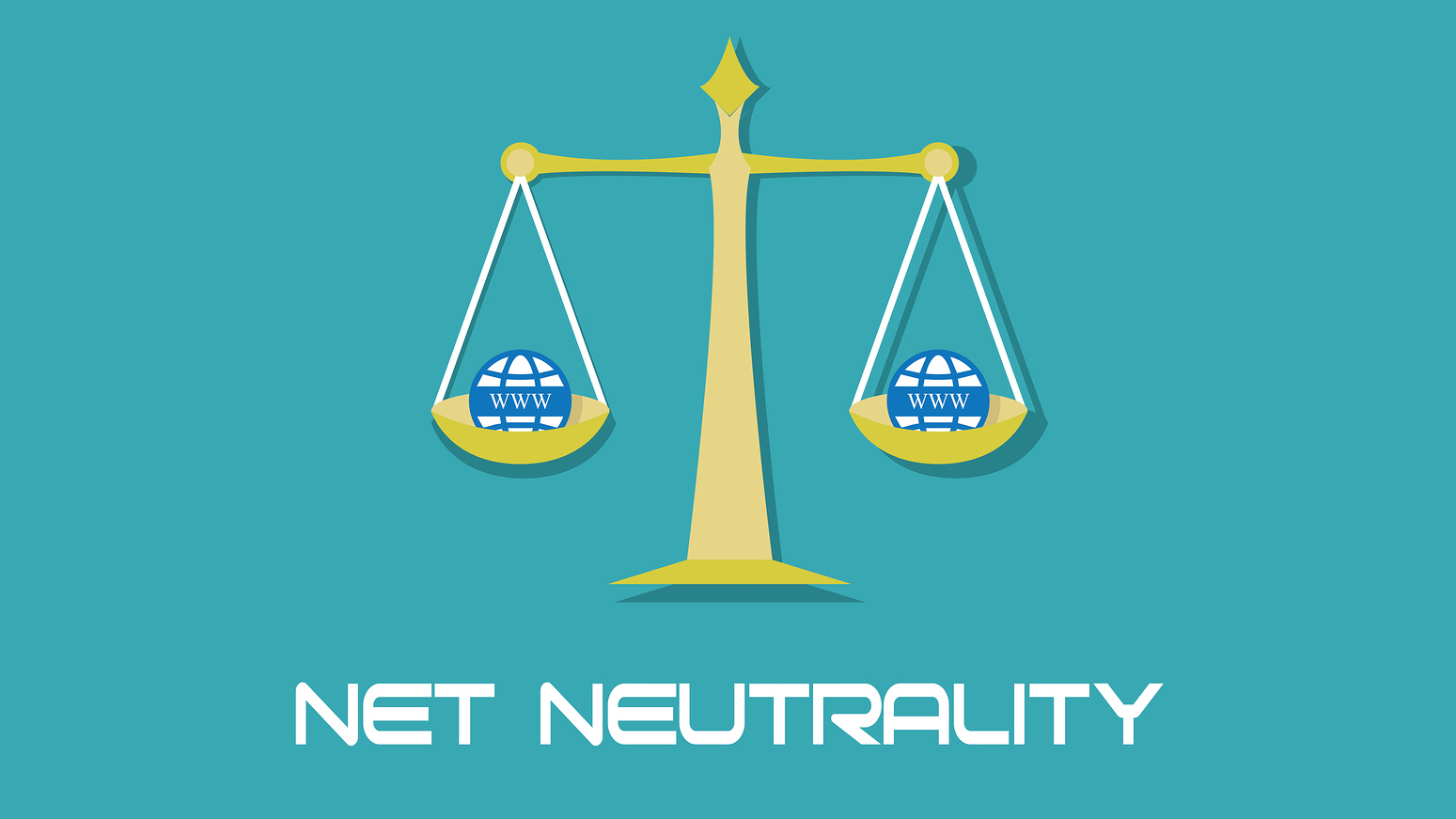What has Donald Trump done for the tech industry so far?
Trump’s tenure in the Oval Office has been turbulent for technology


When business mogul and US The Apprentice star Donald Trump won the US presidential election in 2016, many across the world were left flabbergasted. Not only was Trump a controversial candidate with no previous experience in politics, let alone government, he also touted strong, polarising views.
Trump's triumph over seasoned politician Hilary Clinton in the race for the White House saw a Democratic administration replaced with a Republican one and a politically moderate president replaced by one with controversial policies on immigration and the handling of foreign relations.
But Trump comes from a business background, and in a nation filled with some of the largest and most influential technology companies, there was scope that the new president could bring that business nous to bear on the US technology sector.
Trump has certainly has an impact on America's technology industry, but like his presidency thus far, the effect he has had on the sector has been controversial.
Accelerating AI
One of the more positive things Trump has done for the technology world centres around a recent executive order on artificial intelligence.
The president signed an order that aims to position the US as a world leader in AI. The "American AI Initiative" is something of a call-to-arms for federal agencies to prioritise the funding of research and development of the technology.
It outlined the need for "increasing access to Federal data and computing resources for America's AI researchers", "promoting a responsible approach to AI by encouraging transformative applications of AI, while continually improving outcomes for workers and users alike" and having regulatory agencies establish guidance on AI development across technology and industrial sectors,and to come up with technical and safety standards for AI systems.
Sign up today and you will receive a free copy of our Future Focus 2025 report - the leading guidance on AI, cybersecurity and other IT challenges as per 700+ senior executives
The aspiration for the US to dominate in the AI arena was also made clear.
"As the pace of AI innovation increases around the world, we cannot sit idly by and presume that our leadership is guaranteed," the White House said. "We must ensure that advances in AI remain fueled by American ingenuity, reflect American values, and are applied for the benefit of the American people."
This appears to be a positive move for the technology world, as America is home to Microsoft, Facebook, Amazon, Apple, IBM, and a whole host of other companies ranging from startups to specialist firms with skin in the AI game.
But there are two controversies here. Firstly, the order appears to have recommendations that closely resemble those in a report the Obama administration released a mere month after Trump took to the Oval Office. Secondly, there was no mention of funding being allocated to fuel this prioritisation of AI, meaning federal agencies will need to rework their budgets in order to meet the rigors of the executive order, rather than having extra money to allocate.
This raises the question of how the Trump administration will follow through on the executive order, as Jason Furman, a Harvard professor who chaired Obama's Council for Economic Advisers pointed out.
"The administration's American AI Initiative includes all of the right elements; the critical test will be to see if they follow through in a vigorous manner," Furman told MIT Technology Review. "The plan is aspirational with no details and is not self-executing."
Trade turbulence
The most significant move Trump has made in terms of affecting the technology industry has been on the trade ban with China and the subsequent prohibition of US companies from trading with Chinese companies deemed a threat to US security.
Since late 2012, the US has been concerned about the security and cyber espionage threat Huawei and ZTE pose to the US due to their alleged ties to the Chinese government, which has a contrasting ideology to America and a somewhat cold relationship with the US.
Over recent years such claims, which Huawei has strongly denied and no concrete evidence has been uncovered to back up, have escalated the situation.
In 2018, Trump signed a bill that banned the use of Huawei and ZTE technology across America's government. This lead to US officials encouraging other nations to follow suit, as well as touting considerations to further ban the use of technology from the two Chinese companies across the US.
Interestingly, there had already been a trade ban on ZTE due to the company violating US trade sanctions against Iran and North Korea. But that was lifted with Trump taking an active role in the process. However, such a move was not popular with senators and despite the Commerce Department coming up with a trade deal for ZTE, the ban was reinstated after the Senate voted in favour of an amendment that would see ZTE, Huawei and other Chinese companies, as well as any companies using their components, from working with the government.
In December 2018, Canada arrested Huawei CFO Meng Wanzhou at the request of the US over accusations she'd breached US trade sanctions on dealings with Iran, further ramping up tensions between America, Huawei and China.
These security concerns and trade battles came to a head in May 2019 when Trump signed an executive order banning US companies from trading with Huawei, ZTE and other Chinese companies the US deemed a threat to its security.
While the crux of the ban from a security perspective was to prevent Huawei and ZTE telecoms equipment from being used in US infrastructure, it had a hefty knock-on effect.
The most significant impact of the ban was that Google was, and currently is, forced to block access to its services for Huawei phones. While existing Huawei phones will still have Google and Android services, new phones from the company will not; there was a 90-day relaxation of the ban so that Google could deliver updates to existing Huawei phones, but that window has since closed and at the time of writing the future support of such devices remains uncertain.
This has resulted in the recently revealed Huawei Mate 30 coming with Android 10 but no access to native Google apps such as the Play Store, Gmail and YouTube.
The ban also curtailed the likes of Android phone chip maker Qualcomm from dealing with Huawei.
Naturally, the ban hit Huawei hard, despite its positive attitude that it would weather the trade trouble, with the company forecasting a hefty revenue loss and laying off US workers.
But the ban, in its current form, also effects US tech firms. Given the growth of Huawei over the recent years, it provides Google with a huge reach for its Android operating system and the services the search giant provides on top of it. Banning Huawei access to such services stands to damage Google's spread of its own services.
And US tech companies that provide parts for smartphones and other electronics to Chinese companies have been affected. Qualcomm partly blamed its failure to hit its financial targets in the third quarter of 2019 on the US trade ban, with it being unable to ship as many mobile chips and modems as it previously had to China.
Both Qualcomm and Intel have reportedly approached the Commerce Department to voice their concerns over the ban and its effect on American technology companies.
To further confuse things, the Trump administration came out with the option for US companies to apply for a licence to deal with Huawei and other Chinese companies on the US trade blacklist. As a result, US tech companies could still have the scope to deal with banned Chinese technology firms, but they now have more hurdles to jump to come to a trade deal, and licences are by no means guaranteed to be granted.
So while the ban may ease the government's concerns over national security, it seems to have brought no benefit to US tech companies -- despite ostensibly removing a foreign rival -- and may even have damaged the sector.
Courting controversy
While AI and trade with China are the areas where the Trump administration has arguably had the greatest impact on the tech sector, they're not the only ones.
US net neutrality -- whereby all internet services are treated as equal on the internet rather than one being given more bandwidth than another by internet service providers -- was removed in June 2018. It's still early days, but that could be a boon for established streaming companies like Netflix, but a challenge for smaller companies looking to compete, which many not have the financial power to secure the bandwidth they need to thrive.
In an echo of the trade ban with China, US government agencies were forbidden from using Kaspersky Labs' cyber security products due to concerns that the company had links to the Russian government and its software could provide back doors into governmental systems. The resultant ban also saw Twitter strip Kaspersky adverts from its platform.
In a more positive move, Trump's administration did appoint meteorologist Kelvin Droegemeier as director of the Office of Science and Technology Policy, so there is now person to advise the president on science and technology within domestic and international affairs.
However, the position had been left vacant for two years after Trump took over from Obama, which is the longest it has been empty since it was formed in 1976. And under Trump, the OSTP staff dropped from 135 to 45, meaning there are fewer people to advise the president on technology and science issues.
Trump has also been pugnacious towards the European Union, claiming that the EU has "taken advantage of the US" after it hit Google with a $4.7 billion antitrust fine. Despite this show of support for Google, in August 2019 Trump attacked the search giant in a series of tweets citing a Fox interview with an ex-Google engineer who claimed Google executives vowed that Trump's election to president would "never happen again"; Trump's response was: "All very illegal. We are watching Google very closely!"
Trump also has a hot and cold relationship with Facebook. He previously accused it of having an anti-conservative bias, claiming "Facebook was against [him]" to Fox News in July 2019. But come September, Facebook CEO Mark Zuckerberg met Trump at the White House, with the president claiming the meeting was "nice", despite Zuckerberg reportedly clashing with Republican senator Josh Hawley over Facebook's record of data protection and privacy.
This fractiousness appears to be characteristic of Trump's relationship with the technology industry as president thus far. And while he has posted blusterous views on Twitter regarding his thoughts on various technology subjects, the administration appears not to have executed many policies or orders to particularly shape America's technology industry beyond the China trade ban.
There's an argument to be made that the Trump administration is more focussed on issues closer to the hearts of Republicans, such as immigration and rejecting climate change, rather than technology. And the US technology industry is such a powerhouse that governmental involvement is arguably not necessary for its future success.
Roland is a passionate newshound whose journalism training initially involved a broadcast specialism, but he’s since found his home in breaking news stories online and in print.
He held a freelance news editor position at ITPro for a number of years after his lengthy stint writing news, analysis, features, and columns for The Inquirer, V3, and Computing. He was also the news editor at Silicon UK before joining Tom’s Guide in April 2020 where he started as the UK Editor and now assumes the role of Managing Editor of News.
Roland’s career has seen him develop expertise in both consumer and business technology, and during his freelance days, he dabbled in the world of automotive and gaming journalism, too.
-
 Trump's AI executive order could leave US in a 'regulatory vacuum'
Trump's AI executive order could leave US in a 'regulatory vacuum'News Citing a "patchwork of 50 different regulatory regimes" and "ideological bias", President Trump wants rules to be set at a federal level
-
 TPUs: Google's home advantage
TPUs: Google's home advantageITPro Podcast How does TPU v7 stack up against Nvidia's latest chips – and can Google scale AI using only its own supply?
-
 Trump considers clemency for Silk Road kingpin Ross Ulbricht
Trump considers clemency for Silk Road kingpin Ross UlbrichtNews Ulbricht was originally given life without parole
-
 Trump's election defeat isn't going to get Huawei back in the UK
Trump's election defeat isn't going to get Huawei back in the UKOpinion The UK's decision to drop the Chinese firm from 5G networks was largely based on its competence
-
 The IT Pro Podcast: What does Joe Biden have in store for tech?
The IT Pro Podcast: What does Joe Biden have in store for tech?IT Pro Podcast The president-elect faces a tough term ahead of him, and tech policy is sure to be on the agenda
-
 Politicians need to stop talking about technology
Politicians need to stop talking about technologyOpinion Half-baked political technobabble isn’t just embarrassing, it’s a sign of policy failure
-
 Rival messaging apps see download spike after WeChat ban
Rival messaging apps see download spike after WeChat banNews Sensor Tower data reveals leap in downloads for Signal and QQ after Trump signed executive order against WeChat
-
 Twitch suspends President Trump’s account for “hateful conduct”
Twitch suspends President Trump’s account for “hateful conduct”News Twitch’s decision marks the first suspension of one of the president’s social media accounts
-
 The IT Pro Podcast: Beating Trump on tech
The IT Pro Podcast: Beating Trump on techIT Pro Podcast With Bernie and Biden still slugging it out for the Democratic nomination, what impact will the US election have on tech?
-
 FCC to hand ISP oversight to FTC as net neutrality repeal looms
FCC to hand ISP oversight to FTC as net neutrality repeal loomsNews Internet pioneers protest against the FCC's effort to repeal net neutrality
